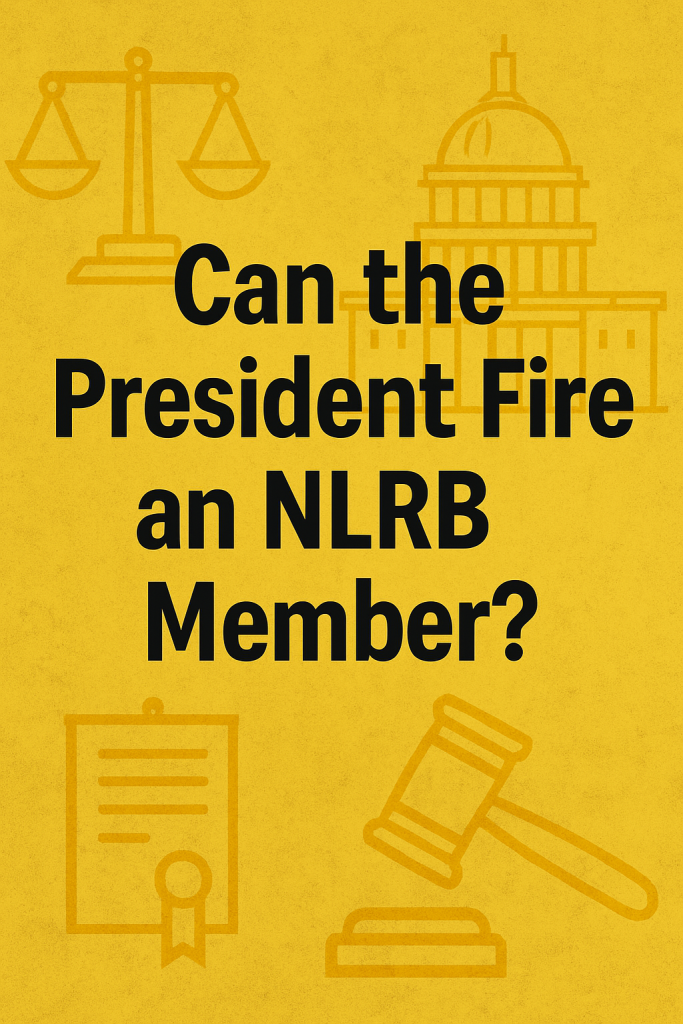Search
Three Judges, Two Agree, One Big Question: Can the President Fire an NLRB Member?

The D.C. Circuit Court of Appeals just put a stop—at least for now—to a judge’s order that would have reinstated Gwynne Wilcox to the National Labor Relations Board (NLRB).
President Trump removed Wilcox before her term ended, citing concerns with her decisions favoring unions. A lower court said the firing broke the law and ordered her back. But on March 28, the appeals court said not so fast—keeping her off the Board while the case continues.
Here’s what each judge had to say:
Judge Walker (majority):
He sided with the President, arguing that the NLRB has real power—it issues decisions, orders back pay, and enforces the law. That means its members should answer to the President. Walker put it bluntly: “Consent of the governed is a sham if an administrative agency, by design, does not meaningfully answer for its policies to either of the elected branches.”
According to Walker, Congress can’t shield agency members from removal when they’re making major policy calls that affect the public.
Judge Henderson (majority):
She agreed, emphasizing that the Constitution gives the President—not Congress—ultimate authority over executive branch officials. Henderson, who has long expressed doubts about expanding removal protections, saw this as a straightforward application of recent Supreme Court precedent.
Judge Millett (dissent):
Millett strongly disagreed, calling the ruling a dramatic break from precedent. She said the law clearly protects Board members from being fired without cause, and policy disagreements don’t cut it. The majority leaned heavily on more recent Supreme Court cases, which Millett argued the majority oversold—and it’s not the D.C. Circuit’s job to get out ahead of the Supreme Court. As she put it, “Getting out ahead of the Supreme Court that way is beyond my pay grade…If the Justices were just pulling our leg, let them say so.”
Three Takeaways for Employers:
- The NLRB is down a member—for now.
Without a quorum, decisions get delayed, and pending cases become uncertain. - Presidents may get more power to shake up federal agencies.
If this ruling holds, future presidents could remove agency leaders who don’t align with their views—even mid-term. - This case could reshape how federal agencies work.
The debate isn’t just about one seat—it’s about whether agencies like the NLRB can truly stay independent.
The Bottom Line:
This isn’t just about one Board member. It’s a high-stakes case about who controls the agencies that enforce federal workplace law—and how fast those agencies can change direction. If the courts ultimately side with the majority, presidents may gain sweeping power to remove members of agencies like the NLRB, even mid-term, based on political or policy disagreements.
For employers, that means the rules governing union activity, workplace policies, and unfair labor practice charges could swing more rapidly from one administration to the next. Guidance issued today could be retracted tomorrow. Decisions you’ve been relying on might lose force.
In the meantime, stay tuned—and stay nimble. The structure of the NLRB itself is now in play, and that could affect not just how the law is enforced, but whether it’s enforced at all.
 The Employer Handbook Blog
The Employer Handbook Blog


